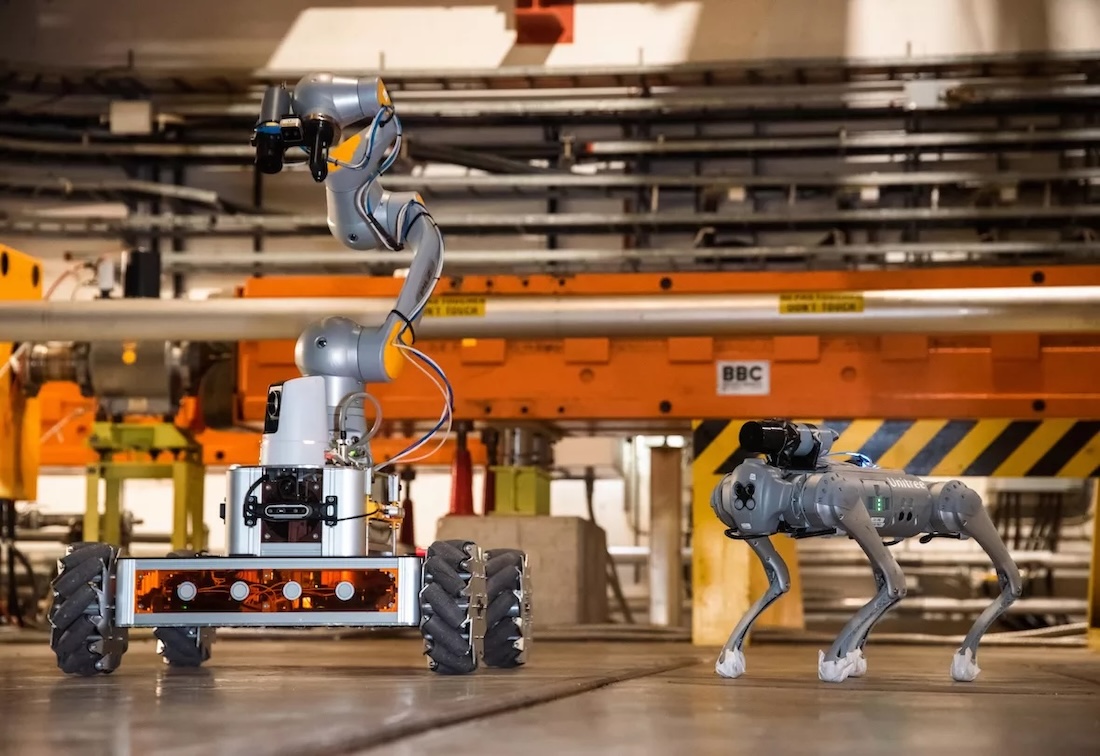Tokyo (SCCIJ) – The largest particle physics laboratory in the world in Geneva, known as CERN, has introduced a four-legged robodog to run radiation protection tests. This step aims to improve safeguarding the expansive experimental spaces.

The robodog, a new robotic marvel, has joined the ranks of CERN’s sophisticated machinery (© CERN).
Stable inspection
CERN is the abbreviation for “European Organization for Nuclear Research” that operates the laboratory in Meyrin, a Western suburb of Geneva, on the border to France. The robodog is the latest machine in the pool of CERN’s most innovative robots housed at Building 937.
The robodog, alongside its counterpart CERNBotNA, a radiation monitor robot on wheels, has conducted a radiation survey within CERN’s largest experimental zone, marking a successful collaboration between these two robots (see picture).
Enhancing the safety
The test highlighted the potential of the robodog to traverse areas that have previously been inaccessible or challenging for both humans and wheeled robots due to loose wires and pipes on the ground.
Chris McGreavy, a robotics engineer from CERN’s Controls, Electronics, and Mechatronics group, highlighted the robodog’s first mission’s success, saying: “There were no issues at all: the robot was completely stable throughout the inspection.”
The robodog named Go1, a commercially available product from Unitree, demonstrates CERN’s intention to explore the development of its custom robotic solutions. The focus is crafting advanced control algorithms and tools for these quadruped robots, aiming for their long-term deployment across the huge laboratory environment.
Robots for heavy payloads
The introduction of the robodog is part of CERN’s broader strategy to augment its experimental areas with robots capable of regular environmental condition monitoring, identifying potential hazards such as water or fire leaks and other critical incidents.
Integrating the robodog with existing monorail robots in the Large Hadron Collider tunnel will expand the scope of areas accessible for monitoring and maintenance, enhancing the safety and efficiency of CERN’s operations.
Increased radiation
CERN’s robot family includes the modular CERNbot in various sizes and configurations, as well as the Train Inspection Monorail and CRANEbot. These machines have been instrumental in carrying heavy payloads across the laboratory.
The versatile and handy CRANEbot has been designed to install and carry out routine maintenance work on a variety of equipment in areas with higher radiation levels caused by the planned tenfold increase in luminosity, the radiated electromagnetic energy per unit time.
The High-Luminosity Large Hadron Collider will increase the number of collisions to study fundamental components of matter in more detail increasing the likeliness of more discoveries. But this will make it unsuitable for human intervention.
Text: SCCIJ with CERN material





























